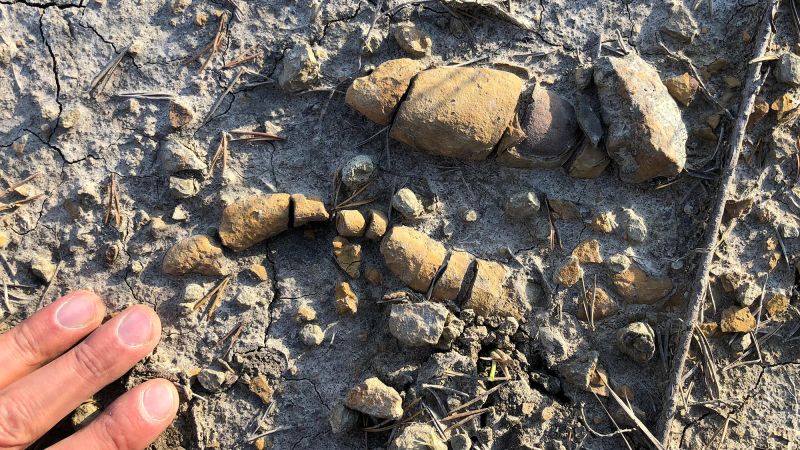The fascinating history of dinosaurs, an extinct group of reptiles that once roamed the Earth, has always intrigued paleontologists and amateur enthusiasts alike. From their humble beginnings to their eventual domination over the planet, the complex reasons behind their evolutionary success pose a captivating mystery. Recent research has shed light on this enigma by delving into a unique and often overlooked source of information—dinosaur droppings, scientifically referred to as coprolites.
Martin Qvarnström, a paleontologist from Uppsala University in Sweden and lead author of a significant study published in the journal Nature, emphasizes the importance of understanding not just the lives and extinction of dinosaurs but their evolution as well. Around 230 million years ago, the earliest dinosaurs were relatively insignificant players in a world full of diverse reptiles. However, by approximately 200 million years ago, they had become the prominent rulers of the Earth—a transformation that occurred over a span of about 30 million years. The reasons behind this remarkable success have long been a topic of debate among scientists.
To unravel this mystery, Qvarnström and his team focused on an unusual source of data: bromalites, which are the fossilized remnants of dinosaur excretions, including both feces and vomit. They meticulously analyzed over 500 fossil specimens collected over 25 years from ten different sites in the Polish Basin, dating from the Late Triassic to the early Jurassic Period. This comprehensive study provides a window into the ecosystems of that time, heralding a shift where dinosaurs gradually came to dominate the landscape.
Qvarnström pointed out that while bromalites contain valuable paleontological information, they have often been underestimated, dismissed merely as curiosities. However, this research found that the size and variety of these fossils increased over time, suggesting the emergence of larger dinosaurs and diverse diets, which directly correlates to their evolutionary advancements.
By examining the functional characteristics of the bromalites and correlating them with fossilized skeletons and footprints, scientists were able to classify the animals that produced them. This analysis, which spanned ten years, illuminated the types and sizes of dinosaurs present at various points in history. According to the researchers, this study provides a unique insight into the factors that contributed to the rise of dinosaurs.
Among the innovative methods employed, advanced imaging techniques such as 3D scans at the European Synchrotron Radiation Facility in France allowed researchers to explore the internal structures of these ancient remnants. This approach led to the remarkable discovery of various dietary components within the coprolites, including remains of fish, insects, and plants, showcasing a rich tapestry of life in the prehistoric era.
Significantly, the study posited that the evolutionary triumph of dinosaurs can be divided into five distinct phases, ranging from their omnivorous ancestry to the emergence of specialized herbivore and carnivore species. Notably, the increase in volcanic activity during this period potentially resulted in a more diverse array of flora for these creatures to consume, eventually paving the way for the rise of gigantic herbivorous dinosaurs.
The study also provided insight into the dynamic shifts in dietary habits, suggesting that while some ancient creatures had restricted diets, dinosaurs had a more versatile palate. Evidence indicates that large herbivorous dinosaurs consumed an array of plant types, which likely contributed to their evolutionary resilience and adaptability amidst changing environments.
A comparison revealed that as dinosaurs diversified, their competitors—such as dicynodonts—disappeared, leaving the ecological niche open for the flourishing of various dinosaur species. Moreover, the resilience and adaptive capabilities of dinosaurs, combined with their upright limb structure, may have provided them with an evolutionary advantage over their contemporaries.
In conclusion, the combination of various investigative methods and analyses of bromalites paints a complex picture of the rise of dinosaurs, suggesting that their success was not merely attributed to physical advantages or favorable conditions. Instead, it was the intricate interplay of evolutionary processes and dietary adaptability that allowed dinosaurs to thrive and maintain dominance for millions of years until a catastrophic event led to their extinction. As Grzegorz Niedźwiedzki, the senior author of the study, quipped: “Eat your veggies and live longer,” a maxim that surprisingly echoes through time and resonates even in the context of modern-day dietary choices.



